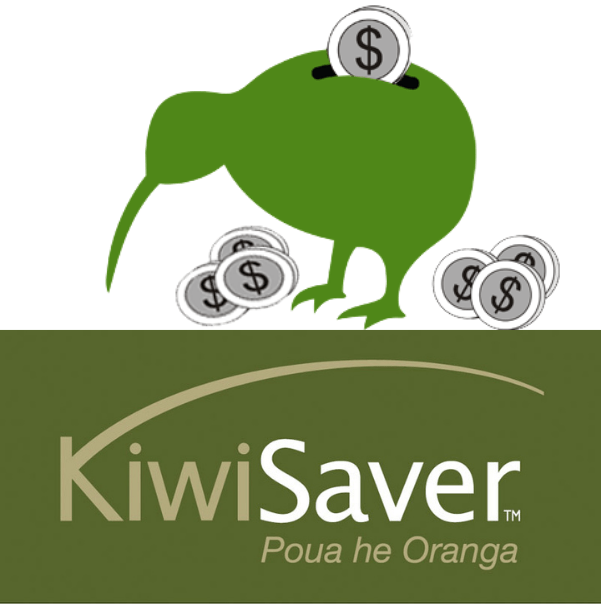Table of Contents

KiwiSaver is New Zealand’s voluntary, long-term savings initiative designed to help Kiwis build financial security, support retirement planning and make home ownership more achievable. Launched in 2007, KiwiSaver has become a core part of modern financial life for people across Aotearoa. With automatic salary deductions, employer contributions and government top-ups, KiwiSaver provides a structured and rewarding way to save.
For many New Zealanders, KiwiSaver is the first serious investment vehicle they ever participate in. It offers investment returns over the long term, a simple enrolment process and flexible contribution options, making it suitable for students, workers, families, contractors, business owners and those nearing retirement.
The following sections explore the entire KiwiSaver ecosystem in-depth — including major KiwiSaver providers, how to join, how to switch funds, the rules for hardship and home withdrawals, and how government contributions work. Internal links are included where relevant, especially when comparing KiwiSaver withdrawals with alternative lending options such as personal loans, business finance and finance calculators that help users evaluate financial decisions.
Projected KiwiSaver Balance by Contribution Rate
Example only – not financial advice or a prediction. Assumes starting balance of $0 at age 25, salary of $65,000, 3% employer contribution and 4% annual net return.
Generate Kiwisaver
Generating KiwiSaver contributions is simple because the system automates most of the process. If you’re employed, contributions come out of your pay before it hits your bank account. You choose a rate of 3%, 4%, 6%, 8% or 10% of your gross income. Your employer must contribute at least 3%, which provides an instant return on your investment before market performance is even considered.
For those who are self-employed, contractors or business owners, contributions must be manually generated. You can choose how much to deposit, how often and which fund the money goes to. Many self-employed Kiwis choose to use a finance calculator such as the one at newzealand-finance.nz to estimate how much to deposit annually to reach retirement goals.
Even small, regular amounts compound significantly over decades. Automatic contributions make KiwiSaver one of the simplest ways to grow wealth in the background without having to think about it.
Member Contributions vs Government Contribution
Example only – based on current government contribution rules (member pays at least $1,042.86 to get the max $521.43).
Booster Kiwisaver
Booster KiwiSaver is one of New Zealand’s long-standing providers. Booster focuses on sustainable investment options, diversified portfolios and easy-to-understand fund structures. They are well known for offering socially responsible investment (SRI) funds and transparent reporting.
Booster also provides specialty funds, including agricultural and private equity, which differentiate them from more traditional providers. Their KiwiSaver app gives real-time access to balances, contributions and fund movements — making it easier for members to stay engaged with their savings.
People choosing Booster often focus on long-term growth, ethical investing and provider support. It is also a strong choice for those purchasing their first home using KiwiSaver, as Booster has established processes for fast withdrawal approvals.
Example KiwiSaver Asset Allocation by Fund Type
Example allocations only – actual mixes differ by provider and fund.
Kiwisaver withdrawal
KiwiSaver withdrawals are allowed under several conditions, with strict rules ensuring the system remains a retirement-focused investment. Withdrawals are generally permitted for:
- First-home purchases
- Significant financial hardship
- Permanent emigration
- Serious illness
- Reaching retirement age (65+ years)
For people considering using KiwiSaver to cover unexpected bills or emergencies, providers often redirect them to alternatives first. For example, someone facing urgent costs may explore a personal loan instead of tapping into long-term savings. This is because withdrawing early affects retirement outcomes.
Each type of withdrawal requires documentation and approval, and processing times vary depending on the provider. Hardship withdrawals are the most thoroughly assessed and may require bank statements, budgets and evidence of hardship.

Kiwisaver hardship
KiwiSaver hardship withdrawals are designed for people experiencing exceptional financial distress. Hardship may include inability to meet minimum living costs, being unable to pay rent or mortgage, unexpected medical expenses or being unable to cover funeral costs for dependents.
Applicants must provide:
- Evidence of hardship (bills, overdue notices, legal documents)
- A detailed budget
- Bank statements
- Proof they have explored financial assistance elsewhere
Providers assess whether the situation meets the legal threshold. Hardship withdrawals often release only the amount required to relieve hardship, not the full balance. Providers encourage people to seek budgeting advice or explore other finance options such as personal loans before withdrawing retirement savings.
Simplicity Kiwisaver
Simplicity KiwiSaver is a well-known low-fee provider operating as a nonprofit. Their fees are among the lowest in the KiwiSaver market, which appeals to cost-conscious investors seeking long-term growth without high management charges.
Simplicity invests in diversified global shares, bonds and socially responsible assets. They also allocate part of their returns to charitable and community housing initiatives, giving members a sense of shared social responsibility.
For many Kiwis, Simplicity is attractive due to its simple structure, low fees and transparent investment philosophy. Over decades, low fees can significantly boost total returns, making Simplicity a popular choice for younger investors.
Kiwisaver calculator
A KiwiSaver calculator helps people estimate how much they’ll have at retirement based on:
- Current balance
- Salary
- Contribution rate
- Employer contributions
- Government contributions
- Expected investment returns
Many users also compare KiwiSaver projections with other financial options, such as projected repayments on a car finance loan or personal loan. This helps people balance long-term savings with short-term financial decisions.
Using a calculator regularly ensures your KiwiSaver strategy stays aligned with your financial goals. It helps identify whether you need to increase contributions or switch funds to meet retirement targets.
Milford Kiwisaver
Milford KiwiSaver is known for active fund management and strong long-term performance. Milford’s investment team actively manages portfolios with the goal of outperforming market benchmarks. This makes Milford popular among investors seeking growth-oriented strategies.
Milford offers:
- Conservative funds
- Balanced funds
- Growth funds
- Aggressive options
Their funds often appear in performance rankings, although active management may come with slightly higher fees than passive providers. Investors choose Milford for strong track records, research-backed investment strategies and experienced fund managers.

Kiwisaver government contribution
The KiwiSaver government contribution is one of the most valuable benefits. Each year, eligible members receive:
- 50 cents for every dollar contributed
- Up to a maximum government contribution of $521.43 per year
- Minimum personal contribution required: $1,042.86 per year
This contribution significantly boosts annual returns and helps accelerate retirement savings. Even people with low incomes or the self-employed are encouraged to contribute enough to receive the full subsidy.
Many self-employed workers also use a finance calculator to determine exactly how much they must contribute to unlock the full annual government contribution.
Kiwisaver login
Each provider has its own KiwiSaver login portal where members can:
- Check their current balance
- Change contribution rates
- Switch funds
- Download statements
- Apply for withdrawals
- Update personal details
- View investment performance
Logging in regularly is recommended so members stay informed, especially during periods of market volatility.
AMP Kiwisaver
AMP KiwiSaver is a major provider offering a wide range of funds including conservative, balanced, growth and specialty options. AMP provides strong customer support, insurance integration and comprehensive financial tools.
People choose AMP KiwiSaver for its:
- Long history in NZ
- Diverse investment choices
- Integrated financial services
- Easy-to-use online tools
AMP offers an extensive investor education section, helping members understand investment risk, returns and long-term financial planning.
Kiwisaver form
A KiwiSaver form may refer to:
- Joining forms
- First home withdrawal forms
- Hardship withdrawal forms
- Contribution rate change forms
- Transfer forms
- Provider change forms
Most providers allow digital form submission. Withdrawal forms typically require identity verification, statutory declarations and supporting documents.
Mercer Kiwisaver
Mercer KiwiSaver is well-regarded for its global investment expertise, diversified portfolios and responsible investment practices. Mercer offers multiple fund types tailored to different risk profiles and ages.
Mercer is also known for its retirement planning tools, which help members estimate how much money they may need at age 65.
how do you check your kiwisaver
Members can check KiwiSaver balances by:
- Logging into their provider’s website
- Using the provider’s mobile app
- Viewing their myIR account
- Requesting a statement
- Asking their employer to confirm contributions were sent
Regular checking helps ensure contributions are being made correctly and investments are aligned with goals.
How to change kiwisaver
Changing KiwiSaver providers or funds is a simple process:
- Choose a new provider
- Sign up with them (they handle the transfer)
- Your old provider sends funds to the new one
- Contributions automatically redirect
Switching funds within the same provider can be done instantly through their app or website.
People often reconsider their fund when their financial situation changes — for example, when taking on new commitments such as a business finance loan or planning to buy a home.
Motherhood penalty Kiwisaver
The “motherhood penalty” refers to the financial setback many women experience during maternity leave or reduced work hours. Because KiwiSaver is contribution-based, taking time off work results in lower deposits, less employer contribution and potentially missing out on the government contribution.
Women can minimise the penalty by:
- Making voluntary contributions
- Ensuring they still meet the $1,042.86 threshold to receive the government top-up
- Planning contributions before maternity leave begins
Small voluntary contributions can reduce long-term retirement impacts significantly.
Impact of Taking Time Off Work on KiwiSaver Balance
Illustrative example only – assumes the same salary and investment return, with one scenario taking 3 years off contributions in their early 30s.
Westpac Kiwisaver
Westpac KiwiSaver offers a broad selection of funds managed by BT Funds Management. They provide a mix of conservative, balanced and growth funds along with responsible investment options.
Westpac customers often appreciate:
- Easy integration with Westpac banking
- Strong digital tools
- Flexible investment choices
- Long-term credibility
BNZ Kiwisaver
BNZ KiwiSaver offers simple, diversified funds with a strong emphasis on low fees and responsible investment. BNZ’s digital banking tools make it easy to track KiwiSaver alongside everyday accounts.
BNZ funds include:
- Cash
- Conservative
- Moderate
- Balanced
- Growth
BNZ also offers guidance for first-home buyers using KiwiSaver, supporting the process of withdrawal preparation.
Kiwisaver providers
New Zealand has several major KiwiSaver providers including:
- Simplicity
- Milford
- Booster
- AMP
- ASB
- ANZ
- Westpac
- BNZ
- Fisher Funds
- Mercer
- Kiwi Wealth
- SuperLife
Choosing a provider often depends on fees, performance, ethical investment preferences and customer support.
Example Annual Fees on $10,000 KiwiSaver Balance
Illustrative only – fee levels differ by provider, fund and balance.
AMP Kiwisaver login
The AMP KiwiSaver login portal allows members to check balances, adjust funds, view employer contributions, change contribution rates and update personal details. It also gives access to retirement tools and risk-assessment calculators.
Kiwisaver withdrawal form
A KiwiSaver withdrawal form is required for:
- First-home purchases
- Hardship applications
- Retirement withdrawals
- Permanent migration
- Serious illness withdrawals
Forms vary by provider and must include identity verification, supporting documents and accurately completed declarations.
superlife kiwisaver
SuperLife KiwiSaver is known for its extensive range of funds, low-fee structure and flexible investment options. Members can mix and match multiple funds, making SuperLife ideal for financially engaged investors who prefer a more personalised portfolio.
They also offer ethical investment choices and strong transparency.
kiwisaver hardship withdrawal
A KiwiSaver hardship withdrawal is a formal request to access retirement savings early due to severe financial difficulty. Only the necessary minimum amount is typically released, and strict criteria must be met.
Hardship withdrawals require substantial evidence, and applications may take time to process depending on complexity.
Kiwisaver first home
KiwiSaver first home withdrawals allow eligible members to withdraw most of their balance to put toward a first home deposit. Requirements include:
- Being a first-time home buyer or having similar financial circumstances to a first-home buyer
- Being a KiwiSaver member for at least three years
- Leaving at least $1,000 in the account
Combined with the First Home Grant, this makes stepping onto the property ladder more achievable.
Booster kiwisaver login
Booster KiwiSaver login provides access to balance updates, fund switching, contribution tracking and investment insights. The dashboard shows total growth, transaction history and projected retirement outcomes.
Kiwisaver changes
KiwiSaver rules and regulations may change over time as governments adjust contribution limits, incentives or fund requirements. Changes may affect investment strategies, eligibility for benefits or the overall structure of the programme.
Many New Zealanders revisit their KiwiSaver strategy when legislative updates are announced.
Join Kiwisaver
Joining KiwiSaver is easy and can be done by:
- Enrolling through your employer
- Signing up directly with a provider
- Joining via Inland Revenue (IR)
Eligible employees are enrolled automatically when starting a new job, although they may opt out within the allowed timeframe.
Self-employed people must join voluntarily by selecting a provider and setting up contribution payments.
KiwiSaver FAQ Section
Can I withdraw money from KiwiSaver?
You can withdraw money from KiwiSaver for a first home, retirement at age 65, permanent emigration, significant financial hardship or serious illness. Withdrawals outside these categories are generally not allowed.
What is the 3 year rule for KiwiSaver?
You must be a KiwiSaver member for at least three years before you are eligible to withdraw funds for a first home or for certain permitted withdrawal types.
How much should a 30 year old have in KiwiSaver?
The ideal amount varies based on income and goals, but many financial planners suggest having at least one year’s salary saved by age 30 across KiwiSaver and other investments.
Do you still get $1000 when you start KiwiSaver?
No. The $1,000 kick-start payment was removed in 2015 and is no longer available to new members.
What are the four reasons you can withdraw money from KiwiSaver?
Withdrawals are generally allowed for first home purchases, significant financial hardship, serious illness and when reaching retirement age.
Can I use my KiwiSaver to pay off debt?
No. Paying off personal debt is not an approved reason for KiwiSaver withdrawal.
How much money can you withdraw from KiwiSaver?
You can withdraw nearly all your funds for a first home, leaving a minimum of $1,000. For other withdrawal types, the eligible amount depends on the specific criteria.
How do I withdraw money from my KiwiSaver?
Submit a withdrawal application form through your provider along with identification and supporting documentation. Approval times vary.
Can I cancel my KiwiSaver and get my money back?
No. KiwiSaver cannot be cancelled for a cash payout except for rare permitted circumstances such as serious illness or permanent emigration.
Can I use my KiwiSaver to fix my teeth?
Not usually. Medical or dental bills are only considered if applying for a hardship withdrawal and proving severe financial distress.
What is the three year rule regarding KiwiSaver?
It means you must be a member for at least three years before you can withdraw funds to buy a first home.
How many times can you use your KiwiSaver to buy a house?
You can use KiwiSaver for a first home once. Second-home withdrawals are not allowed.
What are the changes to the KiwiSaver for 1 july 2025?
Changes vary depending on government policy. Adjustments may occur to contribution rates, fund requirements or incentives, but specific updates depend on legislative decisions.
How much can you take out of your super to buy a house?
In KiwiSaver, you can withdraw nearly all your balance except $1,000. Other countries’ “super” systems differ.
What happens to my KiwiSaver when I reach 65?
At 65, you can withdraw your entire balance or leave your funds invested. Contributions stop unless you voluntarily continue contributing.
Is 100k saved at 30 good?
Saving $100,000 by age 30 is considered excellent and puts you ahead of most people financially.
How much money should a 30 year old have in their retirement account?
Many financial models suggest having one year’s income saved by age 30, but actual targets vary.
Is $50,000 saved by 30 good?
Yes. Saving $50,000 by age 30 is strong progress and indicates good financial habits.
Where should I be financially at 30?
You should ideally have managed debt, built an emergency fund, contributed to retirement and established positive saving habits.
What is the $27.40 rule?
This rule relates to minimum weekly contributions needed to reach certain financial thresholds, depending on your goals and savings plan.
Does the government still give $1000 for KiwiSaver?
No. The government no longer provides a $1,000 kick-start for new members.
What are the benefits of starting a KiwiSaver?
Benefits include employer contributions, government contributions, investment growth and easier qualification for first home withdrawal.
How much should I have in my KiwiSaver at 30?
A common guideline is one year’s salary, though personal circumstances will affect this amount.
How much do you need to put into KiwiSaver to get government contribution?
You must contribute at least $1,042.86 per year to receive the maximum government contribution of $521.43.
Why is my KiwiSaver losing money?
KiwiSaver invests in markets that fluctuate. Short-term losses are normal in growth funds, especially during economic downturns. Long-term investment performance typically smooths out volatility.











